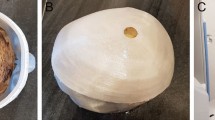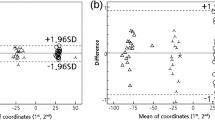Abstract
To the trained eye, every tooth is different. An in-depth understanding of dental anatomy in cross-sectional images is a fundamental basic skill required when interpreting cone beam computed tomography (CBCT) scans. The conventional orthogonal planes of axial, coronal, and sagittal are not always the best planes in which to assess teeth because every tooth is at a slightly different angle to all these planes. In this chapter, the author demonstrates the characteristic anatomy of upper and lower incisors, canines, premolars, and molars in longitudinal and transverse sections, using carefully uprighted images. Some of these teeth are also shown in transverse section at various levels in the crown and root. The chronology of permanent teeth is shown. Developing teeth are discussed and incremental growth lines are mentioned.
The author describes three well-known dental notation systems (Palmer, FDI, hybrid).
There are four videos accompanying this chapter, including one fascinating video showing a scroll-through of all the cross-arch sections of a synthetic panoramic (curved multiplanar reconstruction) image that includes all the upper and lower teeth in a 16-year-old.
Key points
-
Coronal and sagittal CBCT sections of teeth are easy for dentists to understand because they resemble conventional dental radiographic images.
-
Familiarity with axial (transverse) sections of teeth are important in the full interpretation of dental CBCT scans.
-
The explanation about dental notation systems should help clinicians to understand each other if they happen to use different systems.
This is a preview of subscription content, access via your institution
Access options
Subscribe to this journal
Receive 24 print issues and online access
$259.00 per year
only $10.79 per issue
Buy this article
- Purchase on Springer Link
- Instant access to full article PDF
Prices may be subject to local taxes which are calculated during checkout











Similar content being viewed by others
References
Berkovitz B K B, Holland G R, Moxham B J. Oral Anatomy, Histology and Embryology. 5th ed. Amsterdam: Elsevier, 2018.
Van Beek G C. Dental Morphology - An Illustrated Guide. 2nd ed. Wright, 1983.
Acknowledgements
The BDJ Editorial Team would like to thank the authors of this chapter for granting us permission to republish their chapter within our journal. This chapter was first originally published in in S. Y. Ng, Cone Beam CT in Dentistry, BDJ Clinician's Guides, https://doi.org/10.1007/978-3-031-25480-2_2. The second half of this chapter will be republished in an upcoming issue of the BDJ.
Author information
Authors and Affiliations
Corresponding author
Rights and permissions
Springer Nature or its licensor (e.g. a society or other partner) holds exclusive rights to this article under a publishing agreement with the author(s) or other rightsholder(s); author self-archiving of the accepted manuscript version of this article is solely governed by the terms of such publishing agreement and applicable law.
About this article
Cite this article
Ng, S. Visualisation of dental anatomy in CBCT scans: Part 1. Br Dent J 237, 109–116 (2024). https://doi.org/10.1038/s41415-024-7568-4
Published:
Issue Date:
DOI: https://doi.org/10.1038/s41415-024-7568-4



